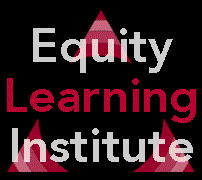Stages of Multicultural Curriculum Transformation
Just as there are several conceptualizations for multicultural education
(see Defining Multicultural Education), there
are several perceptions as to what constitutes multicultural curriculum
transformation. Approaches for multicultural curriculum transformation
range from slight curricular changes to a fully-revised social awareness
and action conceptualizations. James Banks (1993), Peggy McIntosh (2000)
and others have formulated continuums for curricular reform that help
move transformation efforts from the former toward the latter.
The following
stages of curriculum transformation have been adapted from several existing
models including those by Banks (1993) and McIntosh (2000).
Stage
1: Curriculum of the Mainstream
The curriculum of the mainstream is Eurocentric and male-centric. It
ignores fully the experiences, voices, contributions, and perspectives
of non-dominant individuals and groups in all subject areas. At this stage, all educational
materials, including textbooks, films, and other teaching and learning
tools, present information in a Eurocentric, male-centric way.
This stage is harmful both for students who identify with dominant
culture and those from non-dominant groups. It has negative
consequences for the former because, according to Banks (1993), it:
reinforces
their false sense of superiority, gives them a misleading conception
of their relationship with other racial and ethnic groups, and denies
them the opportunity to benefit from the knowledge, perspectives, and
frames of reference that can be gained from studying and experiencing
other cultures and groups (p. 195).
The curriculum
of the mainstream has negative consequences for students from non-dominant
groups, as well, failing to validate their identities, experiences, and perspectives.
According to Banks (1993), it further alienates students who already
struggle to survive in a school culture that differs so greatly from
their home cultures.
Stage
2: Heroes and Holidays
Teachers at this stage "celebrate" difference by integrating information
or resources about famous people and the cultural artifacts of various
groups into the mainstream curriculum. Bulletin boards might contain pictures
of Martin Luther King, Jr., or Rosa Parks, and teachers might plan special
celebrations for Black History Month or Women's History Month. Student learning
about "other cultures" focuses on costumes, foods, music, and other
tangible cultural items.
The strengths
of this stage are that the teacher is attempting to diversify the curriculum
by providing materials and knowledge outside the dominant culture
and that the Heroes and Holidays approach is fairly easy to implement.
Still, the weaknesses
heavily outweigh the strengths:
- By focusing
celebratory attention on non-dominant groups outside the context of
the rest of the curriculum, the teacher is further defining these
groups as "the other."
- Curricula
at this stage fail to address the real experiences of non-dominant
groups, instead focusing on the accomplishments of a few heroic characters.
Students may learn to consider the struggles of non-dominant groups
as "extra" information instead of important knowledge in their overall
understandings of the world.
- The
special celebrations at this stage often are used to justify the lack of effort at more authentic transformative measures.
- The
Heroes and Holidays approach trivializes the overall experiences,
contributions, struggles, and voices of non-dominant groups, consistent with a Eurocentric, male-centric curriculum.
Stage
3: Integration
At the Integration stage, teachers transcend heroes and holidays, adding substantial materials and knowledge about non-dominant groups to
the curriculum. The teacher might add to her or his collection of books
those by authors of color or by women. She or he might add a unit which
covers, for example, the role of women in World War I. A music teacher
might add slave hymns or songs from Africa to her or his repetoire. At
the school level, a course on African American History might be added
to course offerings.
The strengths
of the Intergration stage are that it transcends special celebrations
to deal with real issues and concepts and that it more closely ties
diverse material into the rest of the curriculum. But many weaknesses
remain:
- New
materials and units become secondary resources and knowledge as textbooks
and the meat of the curriculum remain based on a Eurocentric, male-centric
orientation (Banks, 1993).
- New
information is still delivered from a Eurocentric, male-centric perspective.
For example, the story of Manifest Destiny is still told only from
a European point of view.
Stage
4: Structural Reform
New materials, perspectives, and voices are woven seamlessly with current
frameworks of knowledge to provide new levels of understanding from
a more complete and accurate curriculum. The teacher dedicates her-
or himself to continuously expanding her or his knowledge base through
the exploration of various sources from various perspectives, and sharing
that knowledge with her or his students. Students learn to view events,
concepts, and facts through various lenses. "American History" includes
African American History, Women's History, Asian American History, Latino
American History, and all other previously differentiated fields of
knowledge.
Stage
5: Multicultural, Social Action, and Awareness
In addition to the changes made in the Structural Reform stage, important
social issues, including racism, sexism, and economic injustice, are addressed explicitly as part of the curriculum. The voices, ideas, and perspectives of the students
regarding these and all other topics are brought to the fore in the
learning experience -- the students themselves becoming yet another multicultural
classroom resource. The textbook is viewed as a single perspective among
many, and the relevance of its limitations, along with those of other
educational media, are explored and discussed.
Banks,
J. (1993). Approaches to multicultural curriculum reform. In J. Banks
and C. Banks (Eds.), Multicultural education: Issues and perspectives.
Boston: Allyn & Bacon.
McIntosh,
P. (2000). Interactive phases of personal and curricular re-vision with
regard to race. In G. Shin and P. Gorski (Eds.), Multicultural resource
series: Professional development for educators. Washington, D.C.:
National Education Association.




